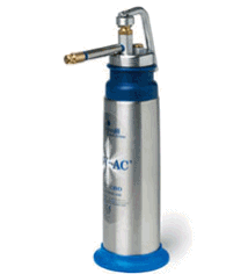How does cryotherapy (freezing) work?
Freezing has been used as a method of treatment for skin problems for many years. It is particularly effective for treating skin lesions that involve the surface layers of the skin (the epidermis). Damage to this layer allows the skin cells underneath (the basal cell layer) to regenerate and produce a normal healthy skin.
When is cryotherapy used?
Cryotherapy is used to treat superficial skin lesions including viral warts, seborrhoeic keratoses, solar keratosis, Bowen’s Disease and occasionally skin cancers. It is a highly effective form of treatment.
How long does treatment take? Liquid Nitrogen is extremely cold and freezing typically only needs a few seconds depending on the type of skin lesion and thickness. Superficial solar keratoses may only require a 5 second freeze compared to a viral wart needing 15 seconds.
What Side-Effects Typically Occur?
Pain
– The treatment will normally produce soreness and a stinging sensation during treatment and particularly as the skin thaws. The treated area may be sore for 2-3 days following treatment.
Swelling and Discomfort
– Treated skin lesions normally swell for 2-3 days. A scab or crust may form, which typically falls off after 10-14 days. This process may take longer for the lower leg as wound healing is generally poorer.
Blister formation
– Blistering may develop and contain either clear fluid or become a blood-blister. The roof of the blister may need to be punctured with a sterile needle. Try and leave the skin intact overlying the blister if at possible. Repeat this process if it is painful until it no longer refills.
Infection
– Skin infection is rare after cryotherapy. See your Practice Nurse if the wound becomes especially red, sore or weeps yellow fluid/pus after several days. Your GP will prescribe antibiotics if infection is suspected.
Scar
– Sometimes it is necessary to produce a scar to adequately treat skin lesions. With cryotherapy, these tend to be white in colour and occasionally they are depressed in the skin. Rarely, a raised keloid or hypertrophic scar may form when high risk sites such as the chest or upper back are treated.
Discolouration
– Treatment may also disturb the skin colour. This may be seen as loss of normal colouration (hypopigmentation) or increased darkness (hyperpigmentation) in patients with dark skin types. Increased pigmentation typically fades after 3-4 months. Rarely, pigment disturbance may be permanent.

